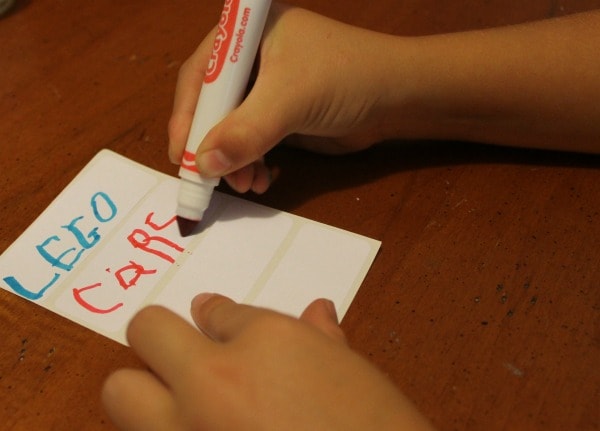I don’t know about your child, but mine balks anytime I put a worksheet in front of him. While this is sometimes necessary and there is no way around worksheets, there are other ways to develop writing skills, and even teach them to enjoy writing. Whether you are homeschooling your reluctant writer or you are looking for some ways to get in some writing practice without frustrating your child these tips have been helpful for me in getting my reluctant writer practicing this skill.
Tips for Writing Practice with Children
Fine Motor Exercises
Even if your child is past the preschool stage, continue to do activities that build fine motor skills and muscle control. They may seem silly and pointless, but often the issue children have with writing is that it is uncomfortable because their hand muscles have not developed enough to make it feel natural. Playing with play dough, stretching rubber bands around various containers, finger play, stacking, working with tongs to pick up small objects are all activities that can strengthen hand muscles.
Vary the Medium
If your child needs to practice writing spelling words, and it is not imperative that it is on paper, try giving them a different way to write, instead of a pencil let them write with crayon, marker, or colored pencil. Use chalk and a chalkboard, a dry erase board, sidewalk chalk, finger paint, a paintbrush on an easel, or let them write them in salt or sand. Just like sometimes a change in scenery helps us refocus, a simple change in writing tool or surface can make it new and interesting.
Create a Writing Station
It can be a box, organizer tote, or use a multi-drawer organizer like I use here. I keep a variety of writing tools including hand-pens, pencils of different sizes and shapes, markers, crayons, as well as sharpeners, erasers and various grips for them. This was our favorite grip in Pre-K and Kindergarten; it is a great tool for correcting pencil grips. In another drawer I place handwriting paper appropriate for their developmental level, note pads, spiral bound notebooks, composition books, and scrap paper so they can choose what to write on. Finally in the third drawer I vary the items occasionally – a dry erase board and markers, mini chalkboard with chalk, salt tray, or occasionally even my iPad where I will indicate a writing practice app like Handwriting Without Tears or ABC’s Of God,
Give them a purpose for writing
Some kids will happily write out worksheet after worksheet, or do copy work from a book. Then there are reluctant writers, the ones who would rather be subjected to any other torture than being made to write. For them, writing often seems pointless. So the solution is giving it a purpose, rather than just copy over and over. For this, I have several ways to sneak in handwriting practice that they will actually request to do.
The first is labeling, I bought a pack of plain white labels at the dollar store and when organizing my sons room, craft supplies, even the spices 0r other pantry items, I ask him to give me hand with the labels. He likes to use colorful markers. At this point his writing is still not the most legible but he is enjoying it – and that’s what counts. If it is a big enough label he is also able to draw a small picture, which is also great for fine motor development.
Another sneaky tactic I employ for encouraging writing is to ask for assistance in writing out the grocery list. I may have one written and I will ask him to add some HEALTHY snack choices to the bottom of my list. Most often I have to spell them out loud to him while he writes. This is a win-win, as he is practicing and we are making healthy choices together. You could also encourage them to write a no holds barred anything goes shopping list, and allow them to chose one item off of it as a reward.
Tailor the writing task to fit their interests. If you child is obsessed with Lego’s have them write Lego words, or for older children they can create an instruction booklet for their unique creations. Does you child babble on incessantly about bugs? Make one of the nature journals here and let your budding entomologist write the names of the insects they see on your next nature walk. Do they love playing house? Have them make a pretend grocery list. Have them use handwritten journaling for their scrapbooks or let them write a letter to their favorite sports or movie star (or to grandma). Little cooks can write up a recipe to recreate a special concoction.
Finally, give them some inspiration. If you asking them to write a paragraph or more, give them a starting point. This can be a first sentence or a question to answer such as ” If I had any super power it would be…. because..”, etc. Another technique that I like to use is to give them a photo from a family outing, or rip an interesting picture out of a magazine and ask them to make up a story about what is happening in the picture.
Homeschooling definitely carries more flexibility with writing exercises than a brick and mortar school, but you can use any and all of these techniques at home to supplement and practice writing without making it seem like a chore. What is your favorite tip for getting your child to write?





Blessed Beyond a Doubt says
These are wonderful tips, thank you for sharing them.